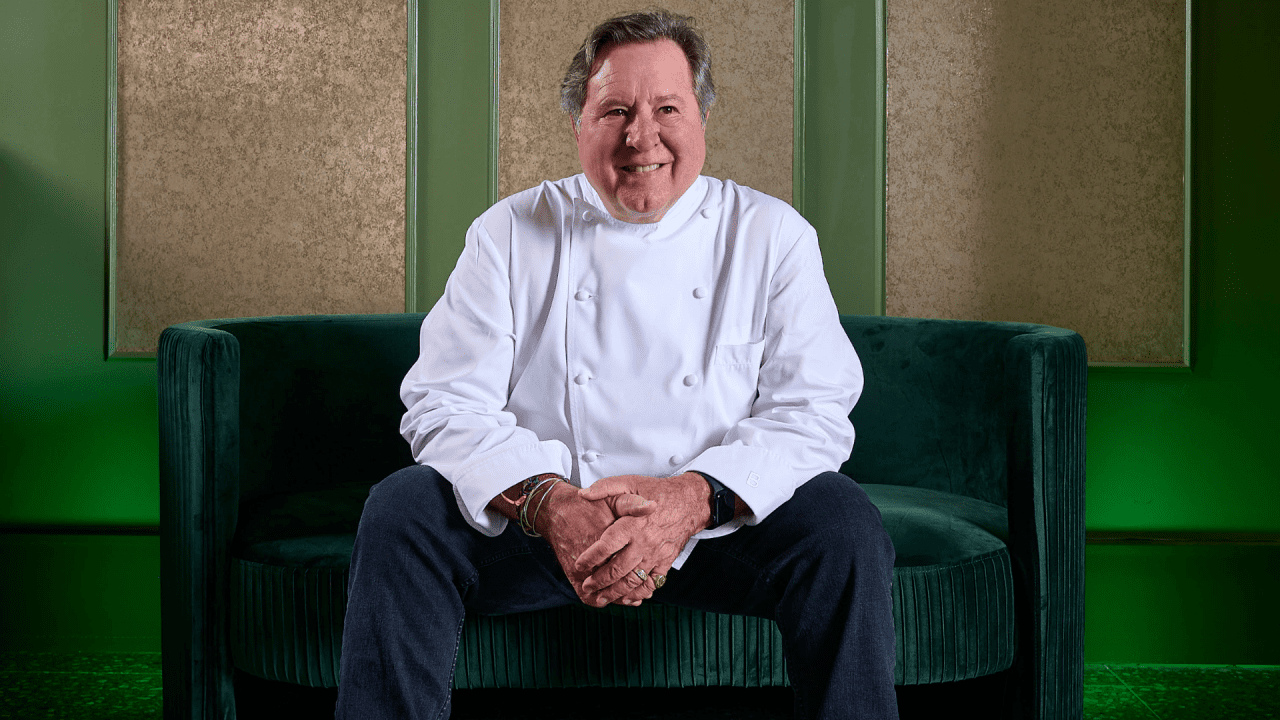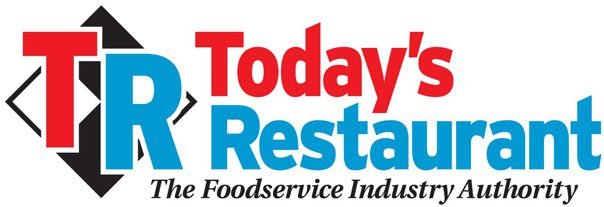
Meet Chef Norman Van Aken: The Newest Trotter Project Board Member
Meet Chef Norman Van Aken, the newest member of our Trotter Project board. Chef Norman and Chef Charlie Trotter were chosen brothers since meeting in the early ‘80s.
If you pass a row of restaurants these days, more than a few will tout their brand of cuisine as “fusion.” You can thank Chef Norman Van Aken for that, who introduced the term to the lexicon of modern cooking in the early ‘90s, sitting on the same conference stage as the late Chef Charlie Trotter.
Not only is Chef Norman the godfather of fusion cuisine, he helped put Florida on the map as a serious contender for award-winning New World cooking. But despite Chef Norman’s many titles (chef, cook, author, video series host, new member of our board), if you asked him what he was most proud of, he would say it is being a husband, father, and Charlie Trotter’s chosen brother. The two shared an unbreakable bond after meeting in the Chicago suburbs working at one of famed Gordon Sinclair’s venues. Chef Norman is kindly helping us continue his dear friend’s mission.
“My first job in Key West was at a place called The Midget Bar and Grill. It was open 24 hours, and the man that hired me told me I’d be cooking barbecue.”
I said, “I don’t really know how to cook barbecue.” And he said, “That’s okay. You’re going to be working the midnight shift. The people who come in here at that hour will be so messed up, they won’t know the difference.”
There’s a vote of confidence. So, I did that. Oftentimes, one of the performers was an unknown strummer named Jimmy Buffett, who played in his shorts and bare feet. This was 1972 or so.
We worked super hard, and we liked what we did, and we were proud of what we were doing as far as making the food. I was very serious about that, even though I hadn’t bought in. But then working for this one temperamental Italian gentleman who had a very small restaurant, things began to coalesce in my mind, where I could envision me doing what he was doing. Having a small restaurant with Janet, having a baby—a chef patron.
I was reading a book at the time called “The Auberge of the Flowering Hearth.” Fantastic book about these two women who had a little inn in the Carpathian Mountains. It was the 1800s. They caught their own fish, they shot their own game, they made everything from scratch. It was a kind of a hippie ideal in some ways, but it resonated with me, and I began to then see a way into becoming a chef in ways that I had not before.
I got a huge break. I got hired to be the chef de cuisine at a place called Louie’s Backyard in Key West. It was 1985 and Louie’s was situated right on the Gulf of Mexico, right on the water. An astonishingly beautiful place. I was made a partner in that restaurant. One of the other partners saw something in me and I saw something in his abilities, which were really financial and wine, and we matched. We opened what became the first restaurant where I was co-owner of, and that was in Key West, not far away, right down in the middle of Old Town, at the Marquesa Hotel in 1988. It was 38 seats, a jewel box restaurant. And 10 days in, ‘The New York Times’ arrived and actually wrote about us. Which was gigantic because Key West was still so far from national attention in most areas.
Unfortunately, things went off the rails because it was so out of tune with reality of the financials. In two years, we were done. And I had to then think what’s next for me and the family and what’s next became moving from our chosen home of Key West to the big city of Miami.
The Trotter Project
Charlie Trotter and I met in 1982. I had recently come up to Illinois with Janet to rejoin our family. Our son was born in Key West in ‘80. Janet was extremely homesick. One of eight children and she wanted to get back home. And my family was also from the same place because we were brought up right across the same lake from each other.
So, we trucked home, and I put my résumé out. Fortunately, I got a job working for Gordon Sinclair in Lake Forest, Illinois. And then I was in the pandemonium of opening up a new restaurant. Gordon was very astute. Gordon understood the idea of American cuisine and where it was going, and how it was different from the cuisine that was there before it.
One day a busboy, whose name I didn’t know, came up to me and said, “I’d like to work in the kitchen.” And I said, “Why?” And he goes, “‘Cause I want to learn how to cook.” And I go, “Well, we don’t have any openings, and you look way too skinny and way too pale to me. I don’t think so.” And I sort of remember his arms kind of being crossed as he was speaking to me. And he came back the next day and he said, “Any openings?” or something like that.
And I thought, do you have amnesia? No, we don’t have any openings. This went on for a couple of more days, if not weeks. Carrie Nahabedian, one of the great chefs of the Midwest and America, was my sous at the time, although she really was more knowledgeable than me.
She said, “Ah, let’s give him a try. We need somebody in garde manger.” And I said, “All right, but he’s your project.” And that’s how it started. My biggest memory of Charlie in those days is how often he came looking for bandages because he cut himself again. And I would tease him a little bit and say, “We’re out, get to the store,” or something like that.
But, you know, anybody that knows Charlie, unless they were part of his family, would be very surprised that he was somewhat timid and tentative. But that didn’t last. It changed, and it changed quickly.
Our friendship began to really form when he moved to California to go to school. He began to write me postcards and letters, and others too, like Carrie. He was just the best at communicating through letters. We had a deep, shared love of literature. And when he found that me, as a chef, loved literature and he, as a chef, loved literature and music, it created a bond in us that really accelerated, became stronger. He was just so incredibly, marvelously smart.
He was writing these postcards about his experiences going to the restaurants in San Francisco at that time, because that’s where he was studying. He was so sophisticated in his way of describing the food and the service and the food and the beverage program, as if he was 20 years older than he was at the time.
I have so many packages addressed to me in the various addresses in Key West and then later Miami, you know, with his handwriting, which is in and of itself, another thing. And then on the outside of the packages, he would sometimes have long quotes from Dostoyevsky or Henry Miller or whomever, and savagely funny oftentimes too, a cutting wit.
And I always thought, “Who is this guy and how did he pick me? What did he find in me that made us click?” I felt very selected in a beautifully chosen way.
When someone gives you the kind of love that Charlie gave me, and by extension, gave my family, you want to carry on their vision. You want to carry on their work. You want to join others that get it, that understand the mission that was more than the beautiful food and the beautiful plates and the beautiful wine list, and all of those things. It was the same human being that saw the benefit of creating Cabrini Greens and trucking students from poor means to come and have dinner in the building next door to the restaurant.
All of those things that Charlie was about, his extraordinary breadth, are in The Trotter Project. Continuing that work in ways that I think makes him smile from heaven. And to be in the choir with you all is something I’m really looking forward to.
So, for The Trotter Project and the things that have to do with everything from food sourcing and agriculture and gardens and community work and all of those things, I think that the definition of a chef needs to be much greater, much more expansive than the clichéd version of the chef who is dressed head-to-toe in whites and screaming and demanding and threatening and all of those things. That wasn’t the way it was for many, and it isn’t sustainable. So that’s what we need to give to these generations coming up.
The terroir of my story is South and Central Florida. The characters in my story are the people who cook with me, who bring me the food to cook, the customers that I serve. I can tell that story by making the food from a stove and a cutting board, or I can tell that story through books, or I can tell that story through a video series. So those are the various means necessary.
There’s a quote that I believe was by the gentleman who changed his name to Baba Ram Dass. And he said, “At the end of the day, we’re all just walking each other home.”
So, if I had a coda to that, an addendum to that, it would be let’s make sure the food’s good.
A big thank you to Chef Norman Van Aken for all of his support! To learn more about ‘our’ The Trotter Project scholarships and other programming, be sure to sign up for our newsletter to stay up-to-date and check out our donation page here.
To read more great articles you can use, visit www.trnusa.com or www.trnusa.com/blog





Recent Comments